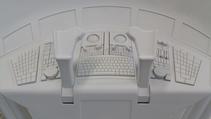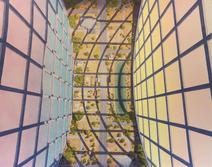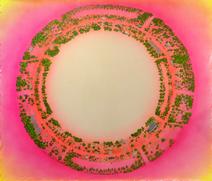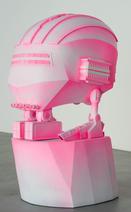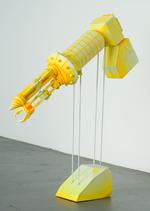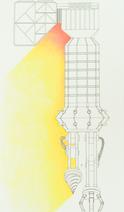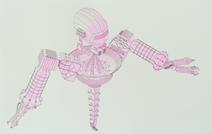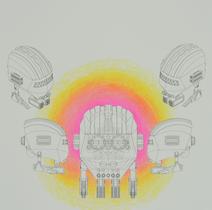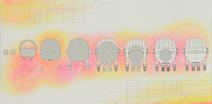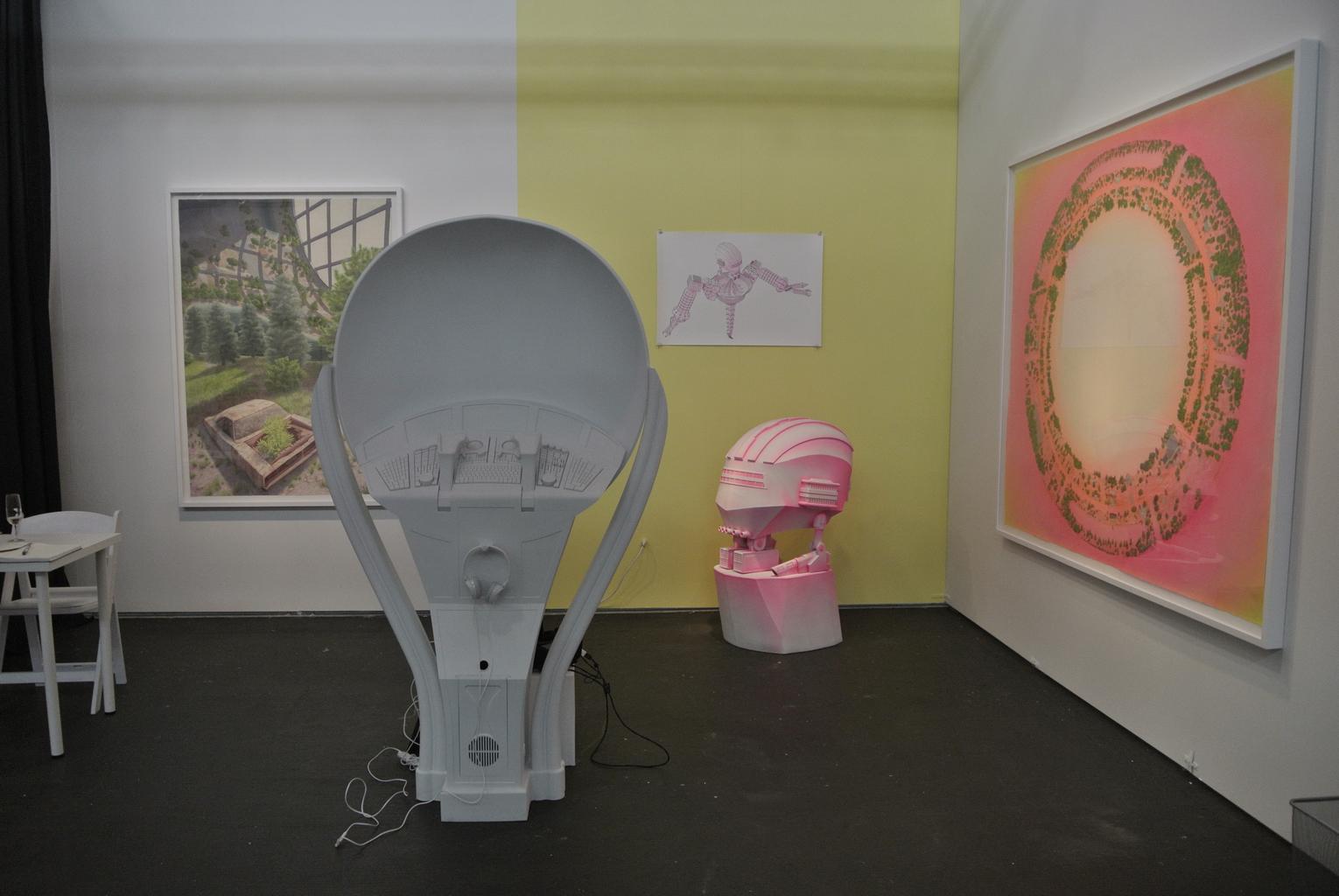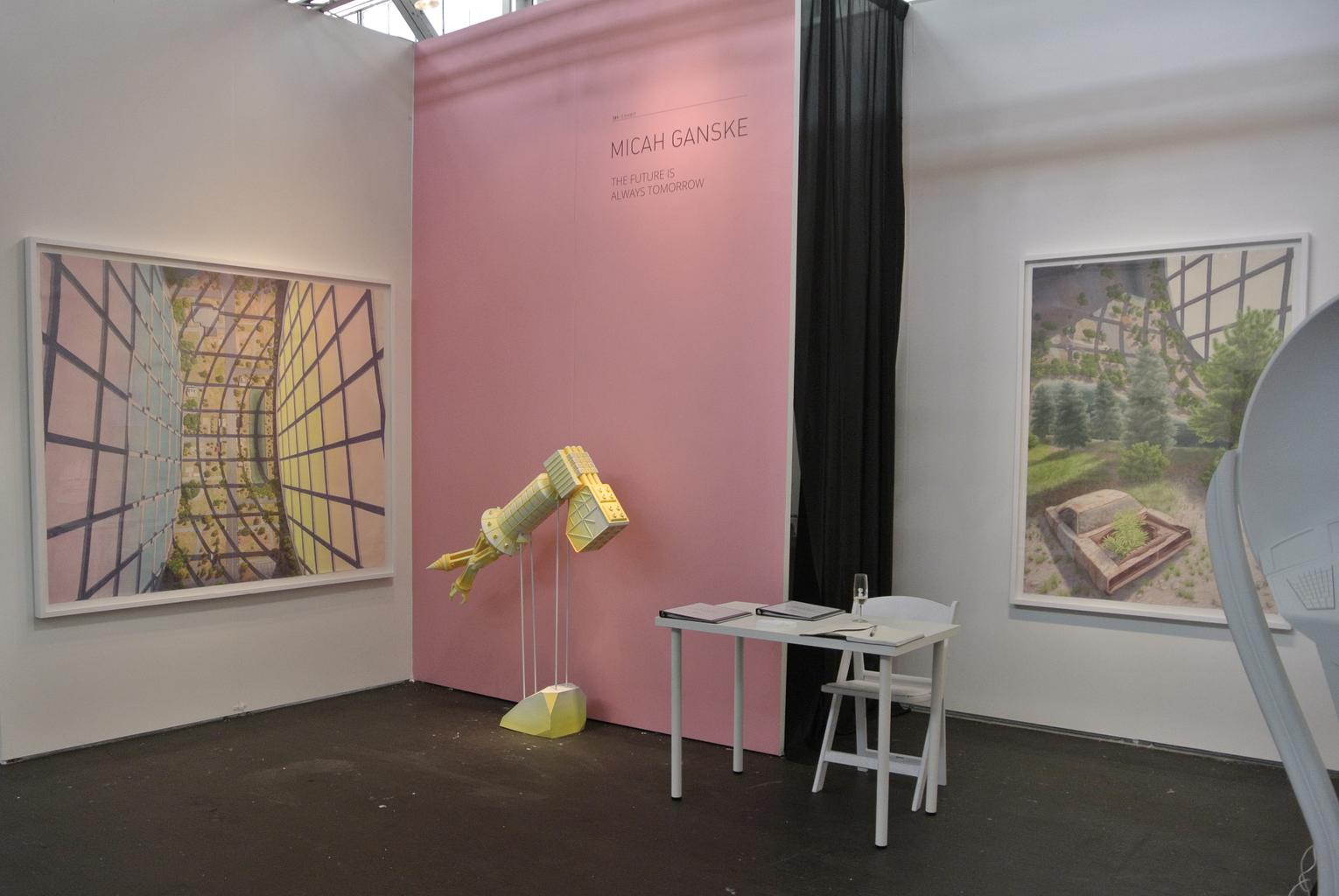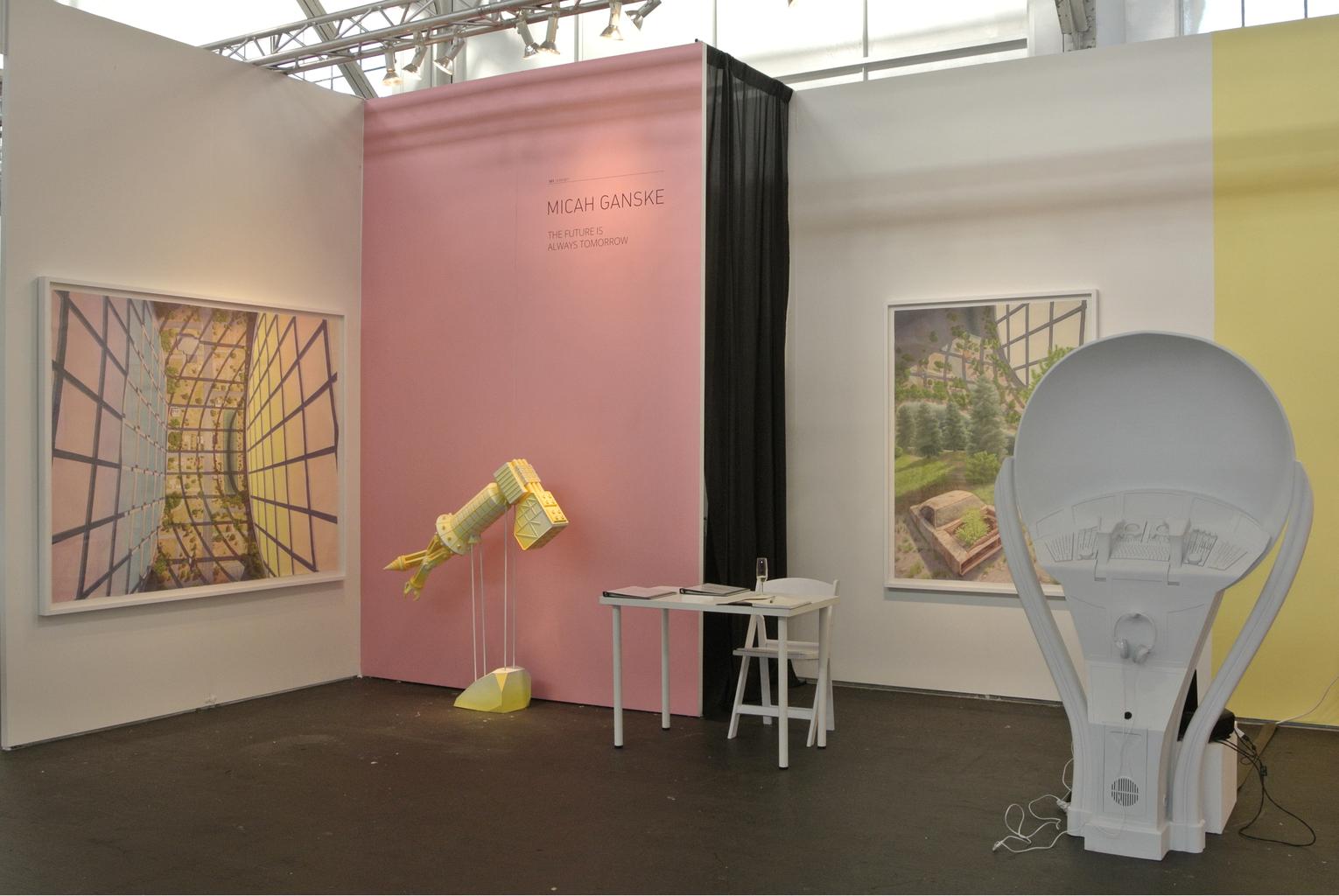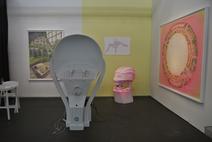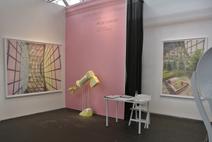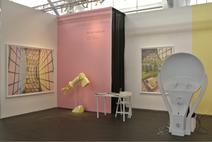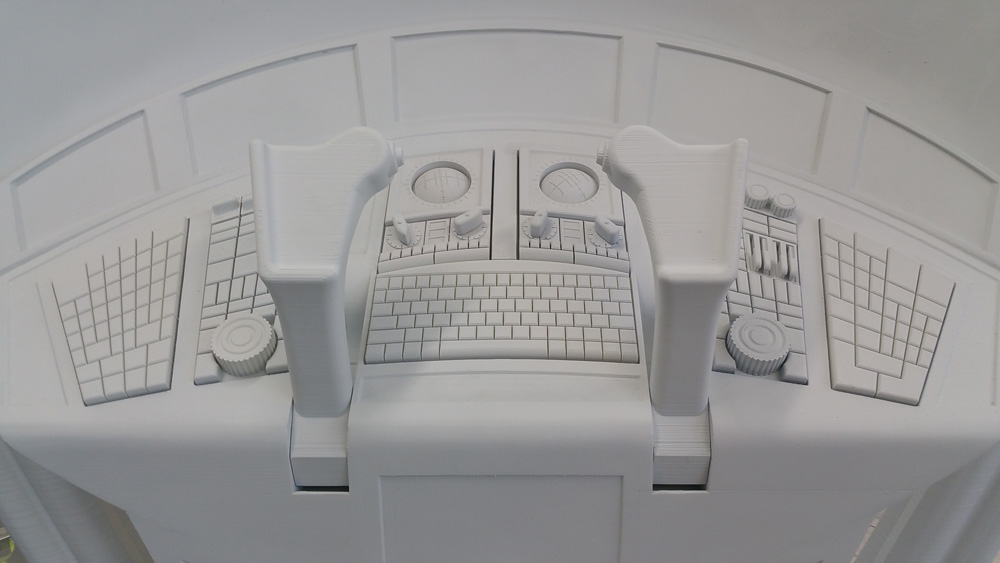
Ocular EVA Pod (detail), 2015. PLA polymer, spray paint, and archival MSA varnish, 72 x 30 x 48 in.
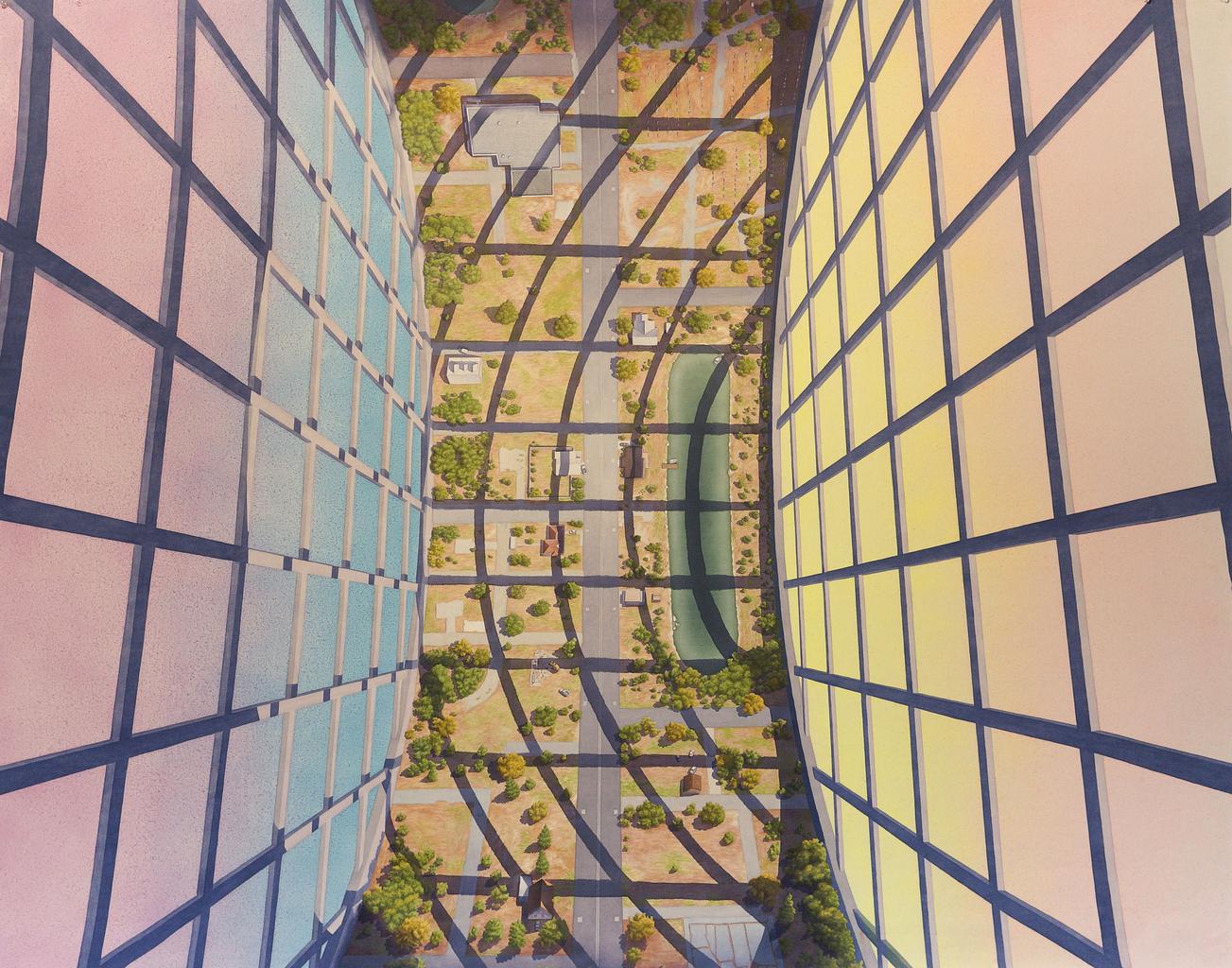
Centralia Habitat, 2014. Acrylic on muslin, 60 x 75 in.
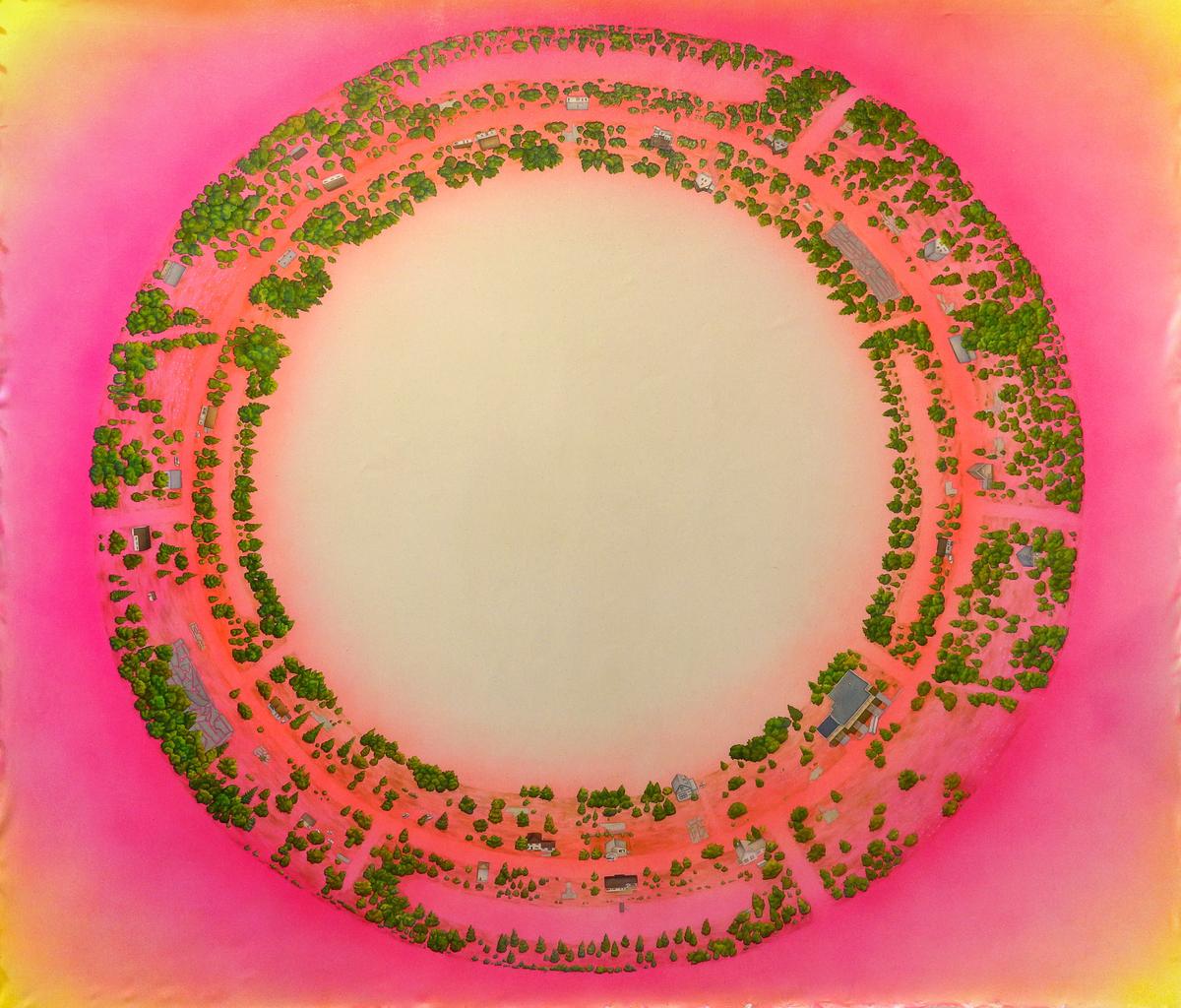
Centralia Habitat: Circle, 2014. Acrylic on muslin, 68 x 74 in.
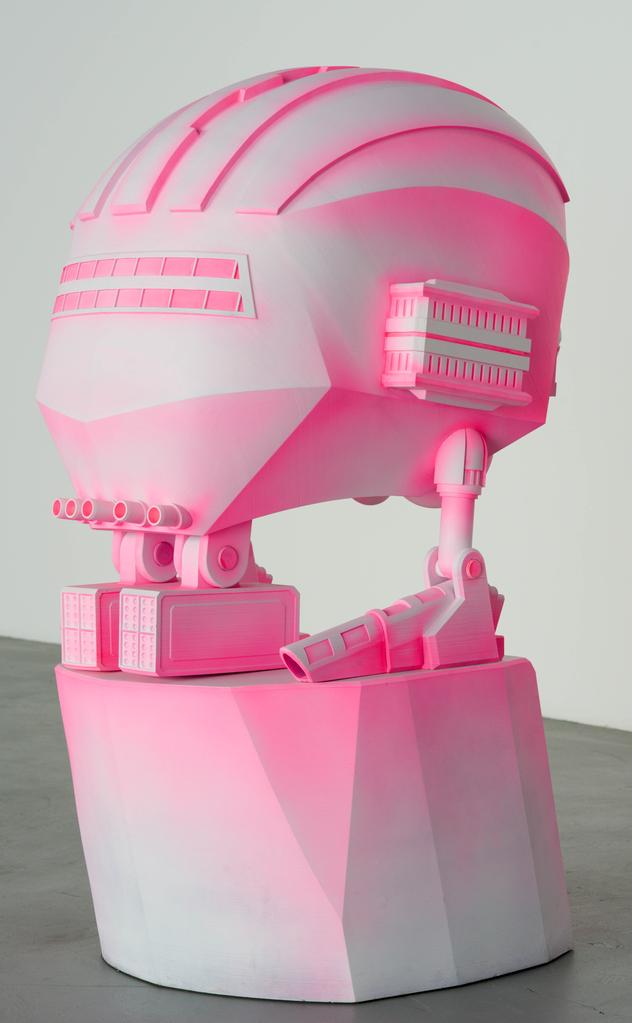
Warhead, 2014. PLA polymer and acrylic, 45 x 24 x 30 in.
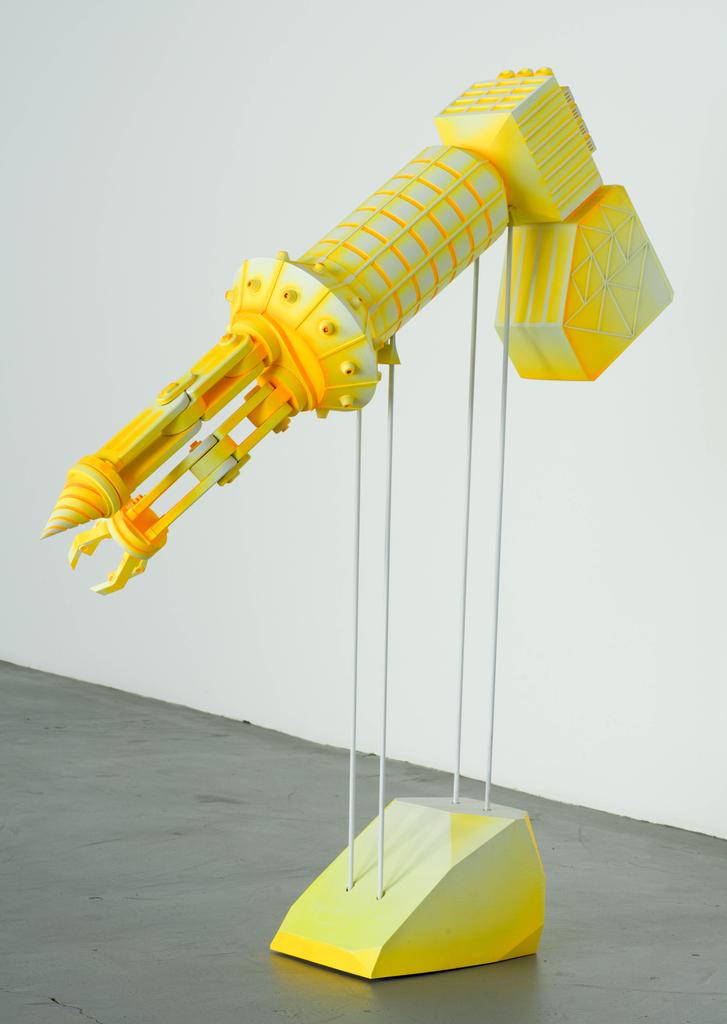
Mining Arm, 2014. PLA polymer and acrylic, 50 x 54 x 12 in.
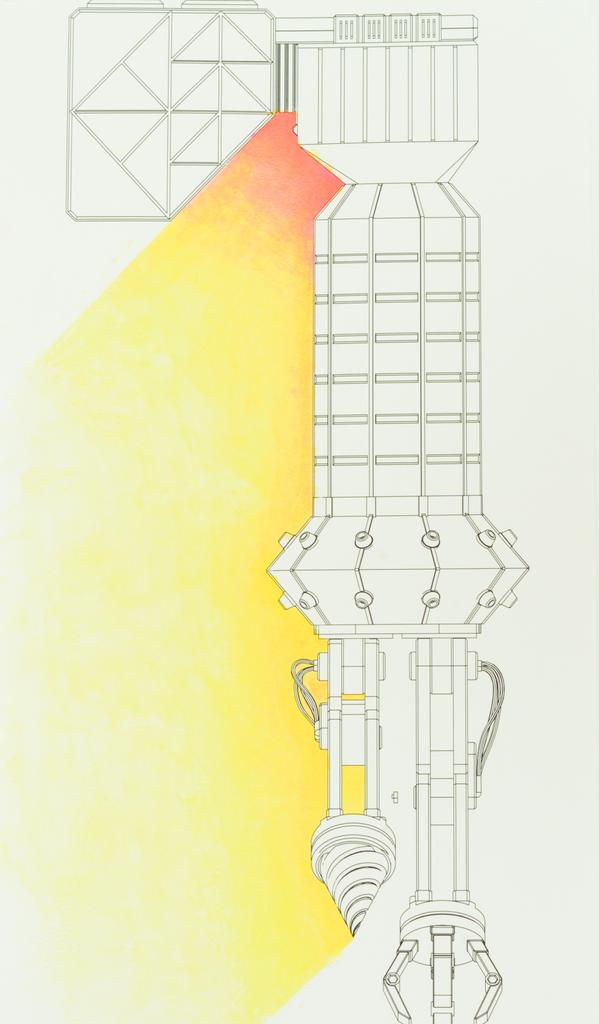
Arm Study: Gradient, 2015. Archival pigment print and watercolor on paper, 24 x 13 in.
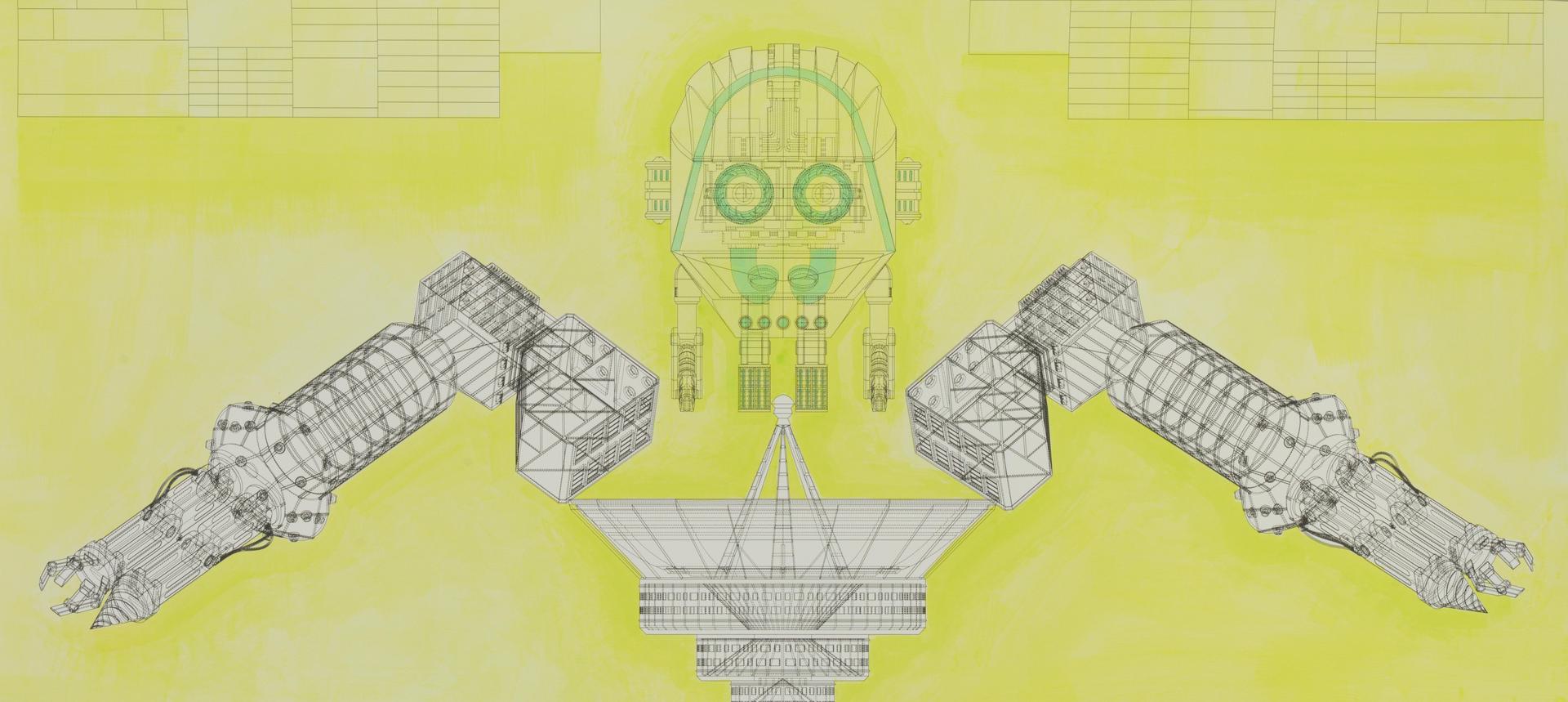
Robot Study in Chartreuse, 2015. Archival pigment print and waterclor on paper, 24 x 51 in.
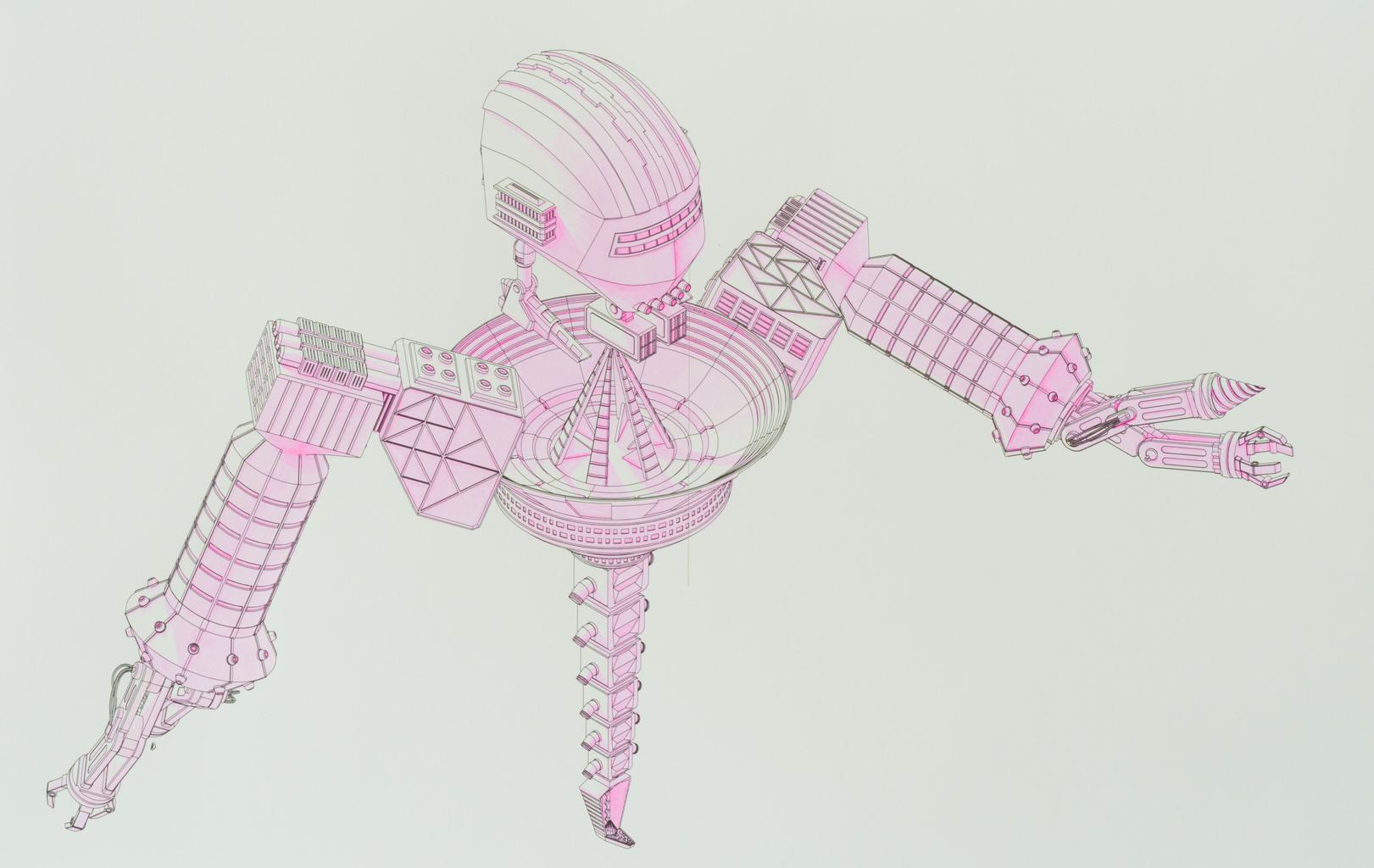
Robot Study in Pink, 2015. Archival pigment print and watercolor on paper, 24 x 36 in.
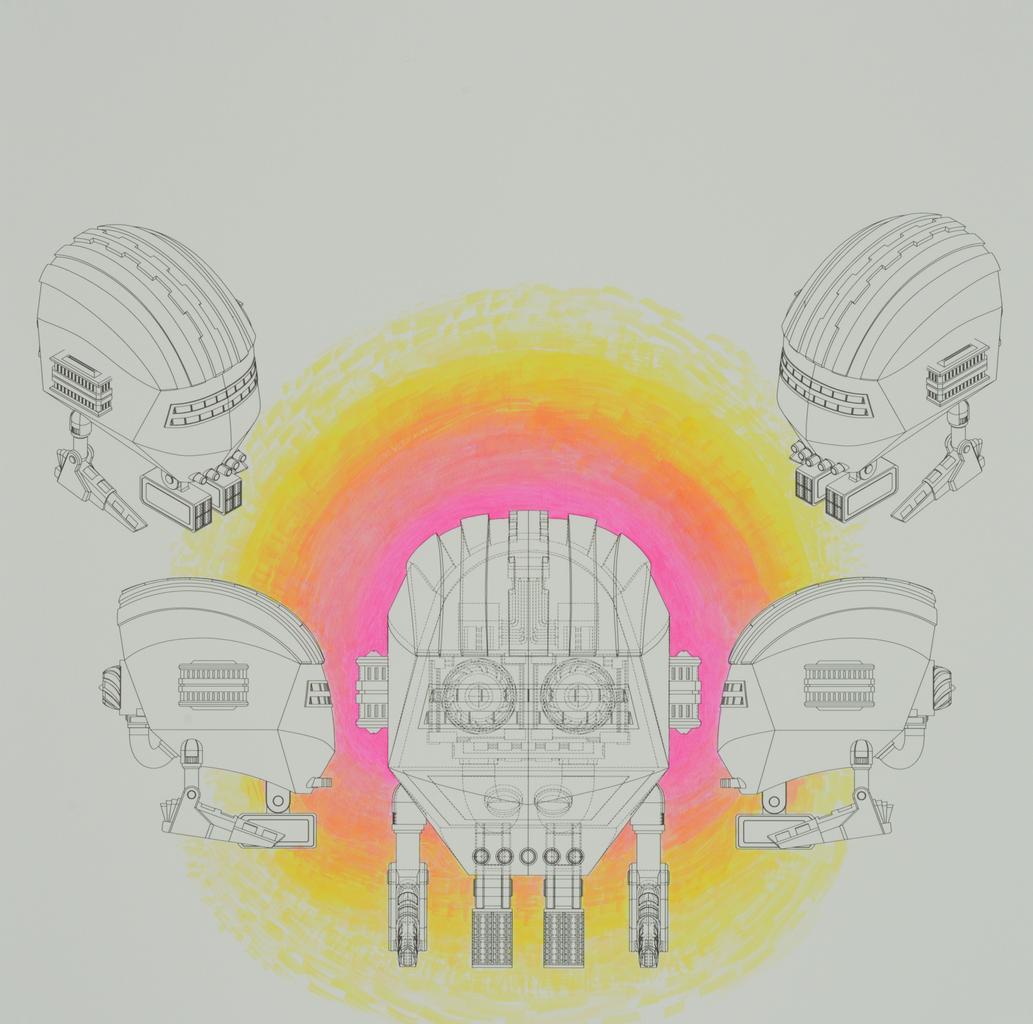
Warhead Study: Sunrise, 2015. Archivial pigment print and watercolor on paper, 24 1/4 x 24 in.
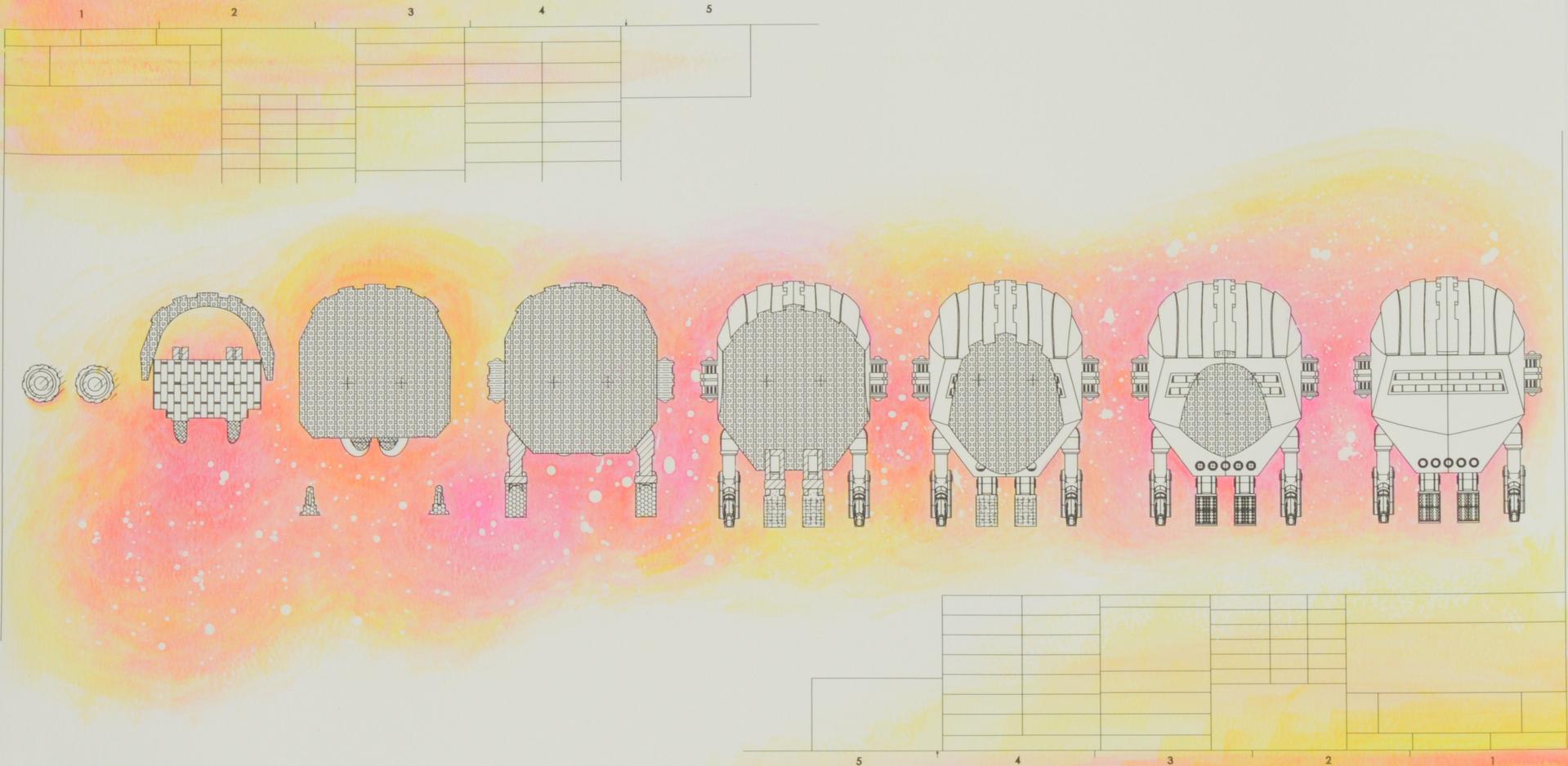
Warhead Study: Slices, 2015. Archival pigment print and watercolor on paper, 13 1/4 x 24 in.
